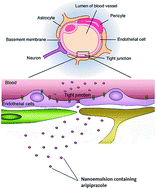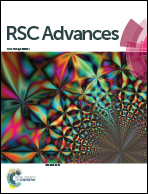The prediction of the optimum compositions of a parenteral nanoemulsion system loaded with a low water solubility drug for the treatment of schizophrenia by artificial neural networks
Abstract
Aripiprazole was encapsulated in a palm kernel oil esters nanoemulsion for the purpose of brain delivery via intravenous administration. High shear and high pressure homogenizers were applied for formulating the low water solubility drug in the nanoemulsion system, which was stabilized using different emulsifiers; lecithin, Tween 80 and glycerol. The artificial neural networks (ANNs) modeling of the nanoemulsion formulation was carried out to achieve the minimum particle size. The effects of the amount of palm kernel oil ester (PKOE) (3–6%, w/w), lecithin (2–3%, w/w), Tween 80 (0.5–1%, w/w), glycerol (1.5–3%, w/w), and water (87–93%, w/w) on the particle size were considered as inputs to the network. The particle size of the samples with various compositions was measured as an output. To obtain the optimum topologies, the ANNs were trained using Incremental Back Propagation (IBP), Genetic Algorithm (GA), Batch Back Propagation (BBP), Quick Propagation (QP), and Levenberg–Marquardt (LM) algorithms for the testing data set. The topologies were determined by the indicator of the minimized root mean squared error (RMSE) for each algorithm. According to the results, QP-5-4-1, GA-5-12-1, IBP-5-11-1, BBP-5-10-1, and LM-5-9-1 were selected as the optimized topologies. It was found that the optimal algorithm and topology were the quick propagation and the configuration with 5 input, 4 hidden and 1 output nodes. Conclusively, ANN models were developed for the prediction of the particle size of nanoemulsions loaded with aripiprazole and its stable nanoemulsion system, which could be used effectively for intravenous administration.


 Please wait while we load your content...
Please wait while we load your content...